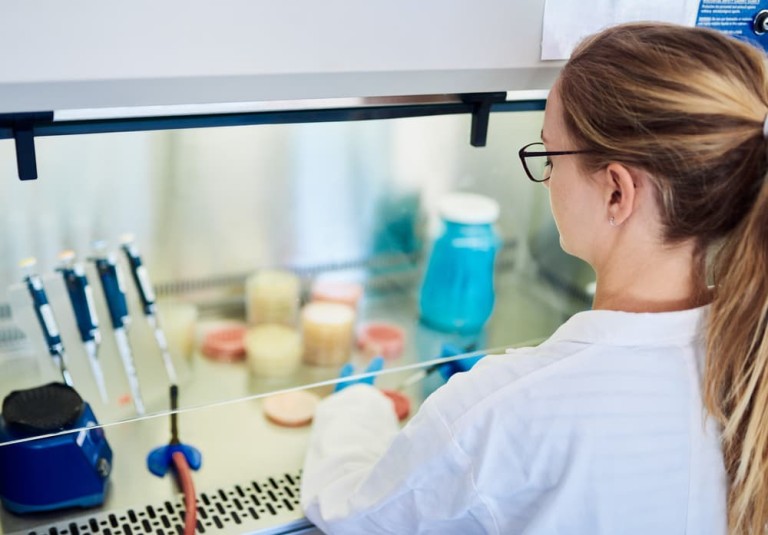
Biological safety cabinets (BSC) are critical equipment in laboratories to protect staff, research or samples, and the surrounding environment from contamination. These enclosed workspaces use ventilation, HEPA filters and negative air pressure to keep biologically dangerous materials away from the user and/or products inside. However, these can only be effective if they are used properly, meaning proper biological safety cabinet use is crucial.
How BSCs Work
Understanding proper BSC safety begins with understanding the three classifications:
- Class I BSCs allow access through a sash and create an inward stream of air that passes through a HEPA filter at the top before it is released. It protects the user and the environment, but not the samples inside.
- Class II BSCs use two airstreams to form a barrier between them and the laboratory environment. One protects the lab worker by pulling air inward to the unit away from the user while the second flows downward into the workspace from the HEPA filter located above it to keep the interior clean and protect the samples.
- Class III BSCs are sealed off from the lab environment entirely, with access provided through glove ports. A pass-through with interlocking doors or dunk tank is used to move materials into and out of the cabinet.
Whatever type of BSC you use, they must be placed away from doors and other areas where people may be moving around frequently, as suggested by the National Sanitization Foundation standard 49 annex I1. They also must be kept away from any air currents, and air supply inlets.
Best Practices for BSC Use
Although comprehensive BSC training should be provided to educate lab technicians in the full range of safety protocols for using these cabinets, below is a brief overview of some essential best practices:
- Using personal protective equipment: This includes wearing lab coats, gloves, masks and safety goggles.
- Disinfecting the BSC: Before starting an experiment, the work area inside the BSC should be disinfected by wiping it down with appropriate sanitizer, disinfectant or sterilization solution followed by sterile water or alcohol. This should include the inner walls and viewing window or sash.
- Moving slowly and carefully: Keeping the air curtain intact means techs should limit side-to-side movements with their arms as well as keeping movements in and out of the BSC to a minimum.
- Limit items in workspace: Blocking and air vents at front back or sides, or by placing larger items that are not designed for use in containment airflow scenarios can adversely affect proper airflows in the space and pose a risk to lap personnel or product. Any time an item must be in the workspace, elevating it for airflow underneath will often pay dividends.
- Sash height: Keeping the sash at the certified height will ensure the velocity of inflow is not changed and that the unit is operating as it was designed, validated and certified. Lowering the sash will increase velocities that will create refluxing in front of the user that can pull contaminants into their breathing zone or draw air too quickly to be captured by the front grill and therefore exposing the work deck to unfiltered and contaminated room air.
- Work area cleanliness: Allowing the unit at least 5 minutes to purge each time it is turned on will allow the unit to remove some of the contaminants that would otherwise linger at the HEPA supply diffuser or in the friction of air at the side walls, back wall, and behind sash. Turning the unit off and shutting the sash does NOT protect any items inside from contamination. If the unit is used every day, the recommendation is to leave the unit running continuously.
- Proper function: Certification of a BSC confirms the unit is operating within parameters that have been shown to limit the migration of contamination. Any time a unit is shipped, moved to another location, had repairs that can effect HEPA filters or power supply, or even plugged into a different outlet, recertification must be performed to bring the unit back into the tight criteria provided by the MFR.
Trust Technical Safety Services
Technical Safety Services provides complete BSC testing, training and certification services. To learn more about everything we can do, get in touch with us today.

